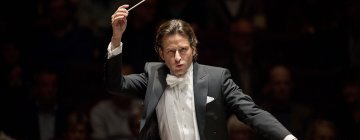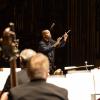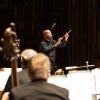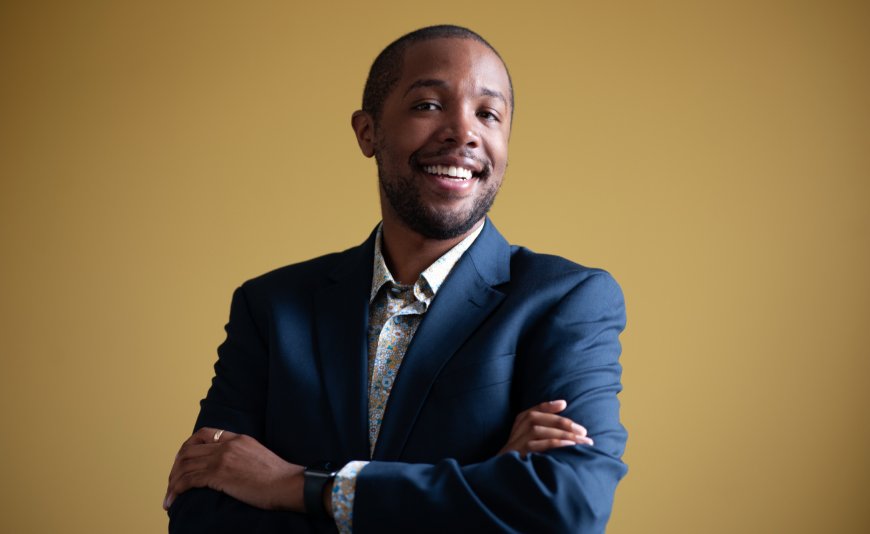
Last year, Kedrick Armstrong became the ninth music director of the Oakland Symphony, and he’s already built a strong rapport with the community. He stepped into the position after the untimely death of the beloved Michael Morgan, who led the organization for 30 years. Armstrong says he’s grateful to stand on the shoulders of Morgan as well as Morgan’s predecessor, Calvin Simmons, who in 1979 became the Oakland Symphony’s first Black music director.
Armstrong, now 30, grew up in South Carolina, obtained his bachelor’s degree from Wheaton College, and pursued a master’s in orchestral conducting at the University of Colorado Boulder. For several seasons, he was the music mentor for EmpowerYouth!, a joint program between Lyric Opera of Chicago and the Chicago Urban League. Additionally, he took part in Chicago Sinfonietta’s Freeman (formerly Project Inclusion) Conducting Fellowship, also serving as assistant conductor for that organization for a year.
In 2022, The Washington Post named Armstrong a conductor to watch. He has guest conducted at Chicago Opera Theater and Opera Theatre of Saint Louis, and in 2023, he led the Lyric Opera premiere of The Factotum by baritone Will Liverman and DJ King Rico.
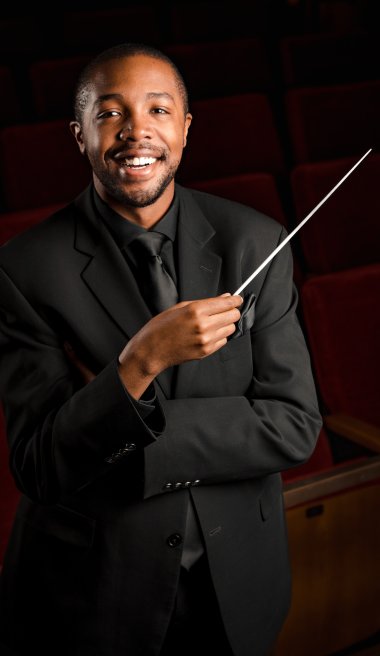
The Oakland Symphony’s board of directors and musicians selected Armstrong unanimously after an extensive search, impressed by his leadership, passion for education, and knowledge of a broad range of music. He oversees two more subscription programs with the orchestra this season, May 16 and June 13 at the Paramount Theatre.
In an interview with SF Classical Voice, the conductor talked about leaving a legacy, music as a tool to communicate, and his experience in Oakland so far. This conversation has been edited for clarity and concision.
It seems like you and the Oakland Symphony are a perfect fit for each other. Why is that?
For every young conductor, landing a music director job is a dream come true. But for me, there’s so many things that I hold important to my artistry around how I make music and the people I make music with. [My] ideas around community engagement and education and how an orchestra best serves its community are so naturally aligned with not only the present Oakland Symphony but its legacy [that] it really did fit like a glove artistically.
You mentioned the legacy. How would you describe the legacy of the Oakland Symphony?
I’ll tell you this: One of the first concerts I did with the Oakland Symphony was a family concert in partnership with Ronald McDonald House. And the orchestra was playing the hits of [Antonín] Dvořák and Brahms alongside songs that the children and their family members had chosen. That was everything from MC Hammer to “Baby Shark” to Dua Lipa, and the way that the orchestra approached [all of the] music with the same amount of reverence, with the same amount of care — that is my approach to things.
I grew up with gospel music and listening to my father play Frankie Beverly, so [for me] music didn’t only exist in classical music but crossed a lot of genres. [This] was something that I had longed for as a conductor — an orchestra that sees music as the priority, as a tool in how we communicate and connect with people. That, I think, is one of the lasting legacies of Michael Morgan, of Calvin Simmons, of so many of my predecessors — using the orchestra as a tool to connect with our communities. And that can be through Tchaikovsky and Tupac and so many things [in between]. I love being able to navigate through all of those terrains with an orchestra and a team that truly respects and honors all of those traditions equally.
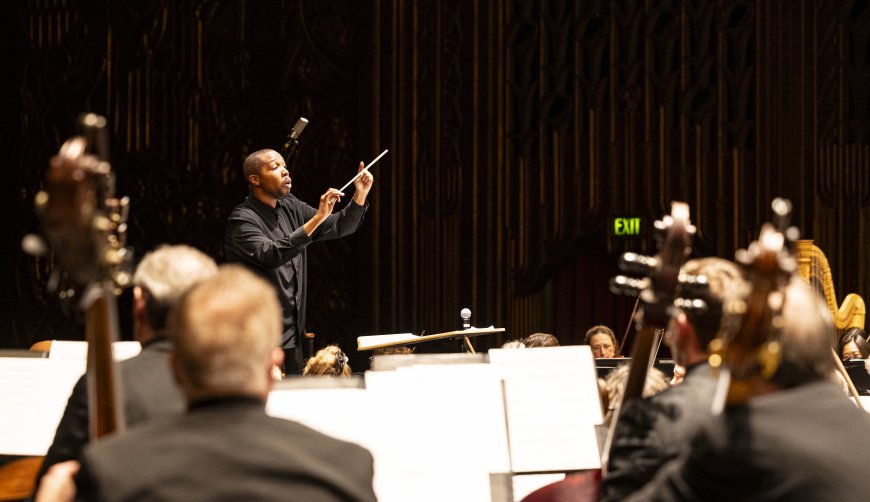
I notice you are doing a tribute to Whitney Houston for the annual “Let Us Break Bread Together” concert in December.
The “Break Bread” concert was started by Michael Morgan and some community [members] to pay tribute to so many iconic musical artists, and when I got to choose my first “Break Bread” artist, Whitney Houston seemed like a perfect fit. She has such range, from her [song] catalog to her acting. My first version of Cinderella was the version with Whitney and Brandy. My upbringing was from Cinderella to The Preacher’s Wife to The Bodyguard to so many other things Whitney. Listening to that music now, there is this sense of the orchestra in the background and the beauty of orchestral arrangements.
[And] the beauty of the Oakland Symphony is showing our community the presence of the orchestra in [the music of] so many of their favorite artists, spanning from Whitney to today. We’re seeing this resurgence of pop, R&B, and hip-hop artists who are performing and recording with orchestras. It’s important to show that fluency and reverence of the orchestra as an ensemble and instrument in the hands of the greats like Bach and Mozart and [musicians] like Kendrick Lamar and Beyoncé.
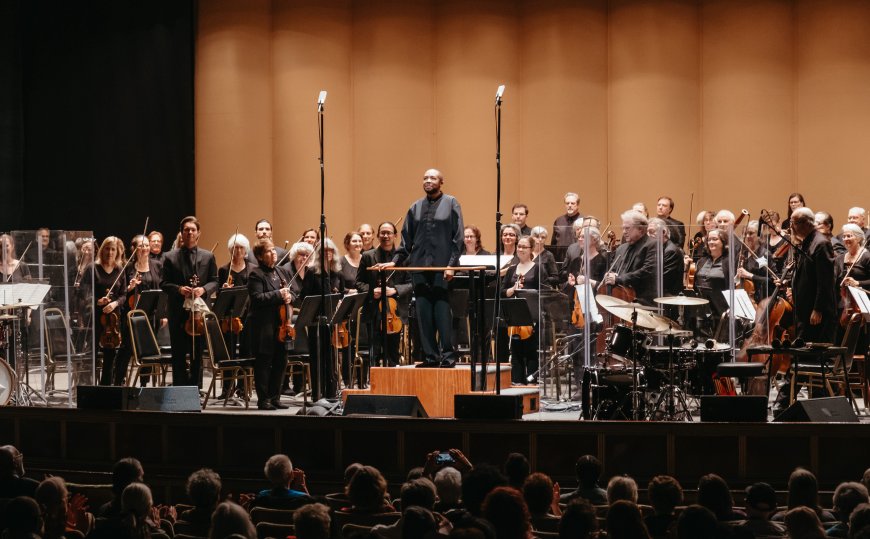
Earlier this year, in announcing the Oakland Symphony’s 2025–2026 season, you said the programming is “very Oakland.” What makes it so Oakland?
It’s been about eight or nine months that I’ve been living in Oakland, and the thing that I love is the diversity and vibrancy in its culture and artistry, this democracy of how people exist and live throughout Oakland and support each other. One of the things that I really wanted to do with the season is highlight as best as I could over six concerts that brilliant diversity, everything from celebrating our trans community to celebrating young, underrepresented, diverse, marginalized composers.
But I also [wanted to] pay tribute to the legacy of the orchestra, the standard repertoire from [Igor] Stravinsky’s Firebird to Verdi’s Requiem, and really reimagine how these works — like the Requiem, this Mass for the dead, this collective communal grief — are placed in Oakland today. Knowing [what’s] going on [in the world] and [what] Oakland is facing, how do we reinterpret these great, iconic works that might seem larger than life to really speak to a community that is experiencing those same kinds of emotions?
I’m grateful for the community members that I’ve connected with. Living in downtown Oakland, I get to have a lot of conversations to really help me decide how best to [reach out] to the community and tell their stories through what we do onstage.
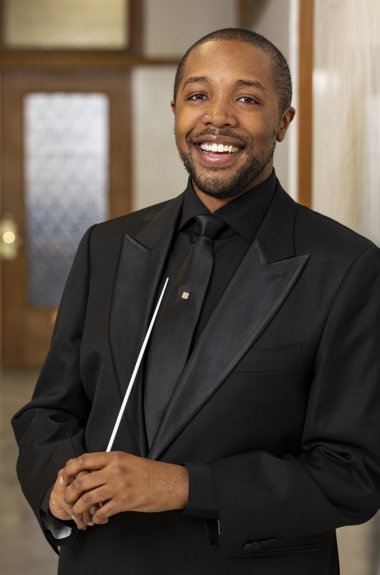
Who are some of the community members and organizations you’re working with?
This goes from a macro scale to someone like [jazz pianist] Cava Menzies, who teaches at Oakland School for the Arts. She was one of the first people who I connected with when I moved out to Oakland, someone who has really deep [ties to the city] through her family. She’s composing a companion piece to go alongside the Verdi Requiem next season. She does a lot of work with local artists and her own CO-LLAB Choir.
[The orchestra is also] partnering with organizations outside of the musical or classical realm, like Youth Alive, which does a lot of work with violence prevention and intervention. Also the Ella Baker Center for Human Rights, which does a lot of work with the prison system. It’s been really beautiful for me to have these conversations, both with local artists and with organizations that aren’t directly tied to classical music but have a deep love and appreciation for music.
[And] then Daniel Bernard Roumain, who’s our current artist-in-residence, is writing this concerto for electric violin, spoken-word artists, and onstage community participation. What does that look like, to bring our community members onstage and have them tell their stories about this political and social [moment] alongside an electric violin concerto? That’s the beauty of living in Oakland. It sort of vibrates the mind with this excitement of collaboration.
Anything else you’d like to say about being in Oakland?
[Something] I tell everyone is that besides our fantastic orchestra and amazing staff, the audience in Oakland is probably one of the best that I’ve ever experienced in my life as far as engagement, enthusiasm, and openness to whatever we present onstage. My managers and agent came to [my debut] concert [as music director in October], and of course, they’ve experienced concerts all over the world, but even they said, “We’ve never experienced an audience quite like the Oakland Symphony’s.”
I have to give so much credit to the community of Oakland and how they champion the orchestra but also hold the orchestra to the fire to continue doing this work. It’s not just artistic administrators and operational administrators, but it’s truly our [entire] community that pushes us to create and to serve them. It really is this beautiful conversation that happens from the stage to the audience, from the audience to the stage.
